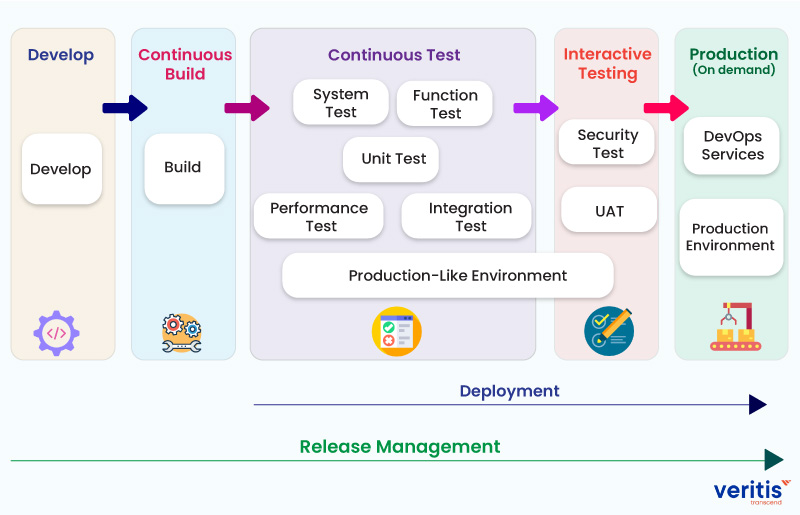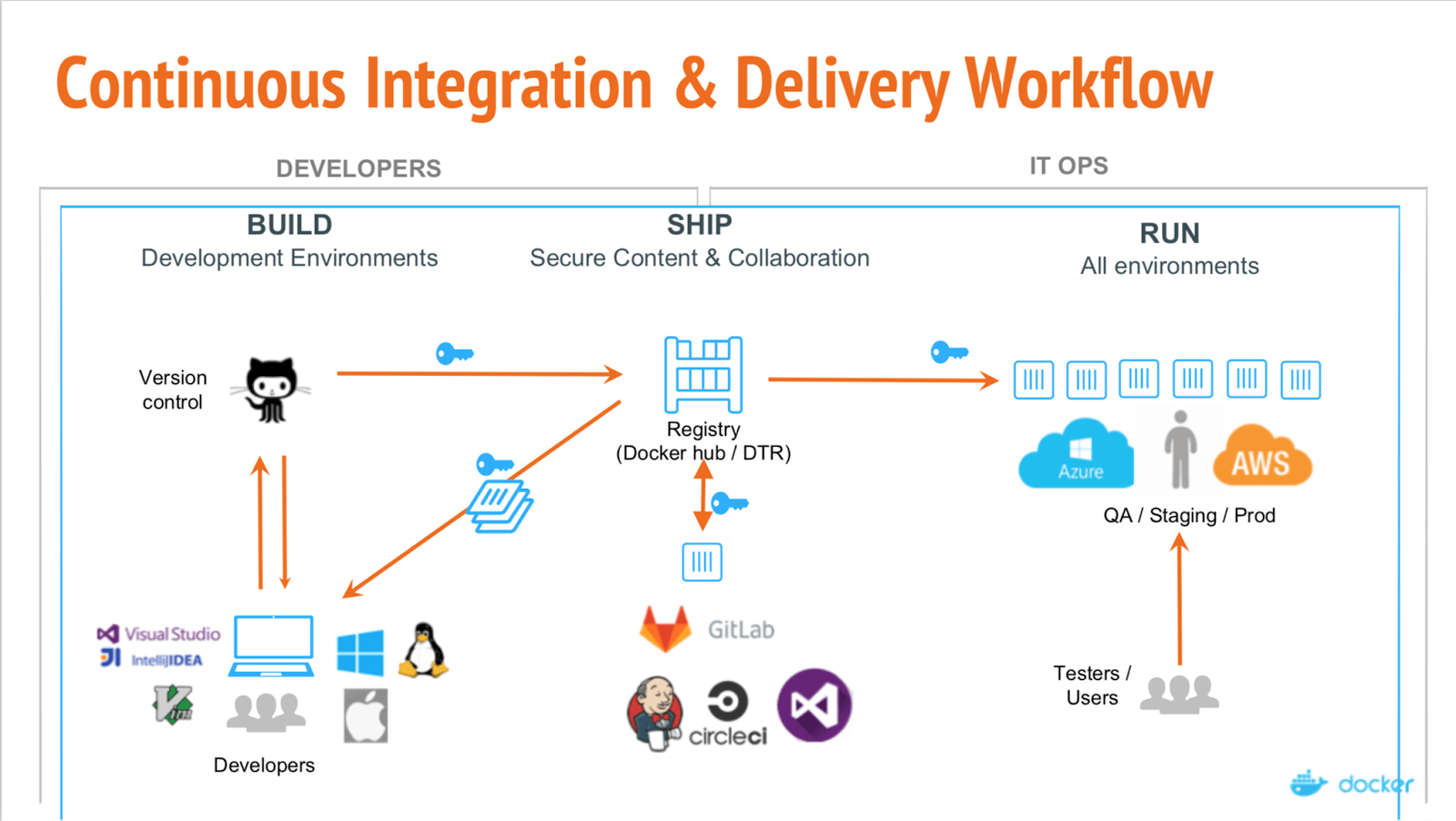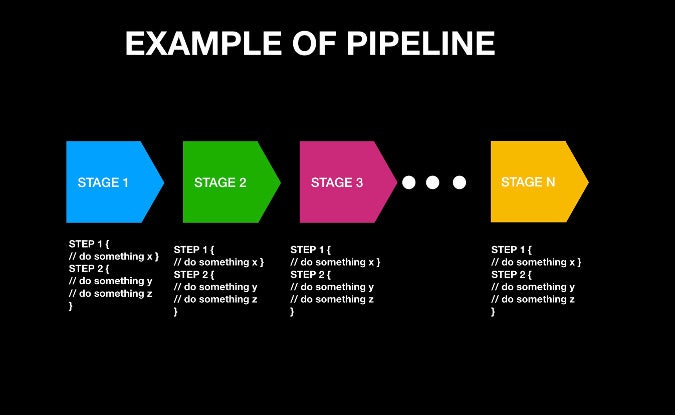Understanding the CI/CD Process: A Key to Efficient Software Development
Introduction: The Role of CI/CD in Modern Software Development
Continuous Integration and Continuous Deployment, or CI/CD, are integral practices in modern software development. By automating the building, testing, and deployment of code changes, CI/CD processes enable development teams to deliver high-quality software more efficiently and quickly. This approach reduces the risk of errors and downtime, improves collaboration, and ensures that the latest features and fixes are consistently integrated into the main codebase.
Understanding the CI/CD Process: A Key to Efficient Software Development
Introduction: The Role of CI/CD in Modern Software Development
Continuous Integration and Continuous Deployment, or CI/CD, are essential practices in modern software development. By automating the building, testing, and deployment of code changes, CI/CD processes enable development teams to deliver high-quality software more efficiently and quickly. This approach reduces the risk of errors and downtime, improves collaboration, and ensures that the latest features and fixes are consistently integrated into the main codebase.
The CI/CD Pipeline: Key Components and Concepts
A CI/CD pipeline typically consists of three main components: version control systems, build servers, and deployment platforms. Version control systems, such as Git, track changes to the codebase and allow developers to collaborate effectively. Build servers, like Jenkins or CircleCI, automate the building and testing of code changes, ensuring that issues are caught early and often. Deployment platforms, such as AWS CodePipeline or Google Cloud Build, facilitate the release of software to production environments, often with the help of automated deployment tools.
Continuous Integration (CI) involves automatically building and testing code changes as they are committed to the version control system. Continuous Delivery (CD) refers to the process of preparing and deploying the software to production environments, often with the help of automated deployment tools. Continuous Deployment (CD) is an extension of Continuous Delivery, where code changes are automatically deployed to production after passing all tests and meeting quality standards.
Understanding the CI/CD Process: A Key to Efficient Software Development
Introduction: The Role of CI/CD in Modern Software Development
Continuous Integration and Continuous Deployment, or CI/CD, are essential practices in modern software development. By automating the building, testing, and deployment of code changes, CI/CD processes enable development teams to deliver high-quality software more efficiently and quickly. This approach reduces the risk of errors and downtime, improves collaboration, and ensures that the latest features and fixes are consistently integrated into the main codebase.
The CI/CD Pipeline: Key Components and Concepts
A CI/CD pipeline typically consists of three main components: version control systems, build servers, and deployment platforms. Version control systems, such as Git, track changes to the codebase and allow developers to collaborate effectively. Build servers, like Jenkins or CircleCI, automate the building and testing of code changes, ensuring that issues are caught early and often. Deployment platforms, such as AWS CodePipeline or Google Cloud Build, facilitate the release of software to production environments, often with the help of automated deployment tools.
Benefits of Implementing a CI/CD Process
Implementing a CI/CD process offers numerous advantages for software development teams. Faster release cycles enable teams to deliver new features and bug fixes more quickly, reducing time-to-market and improving customer satisfaction. Improved product quality results from automated testing and continuous integration, which help catch and address issues earlier in the development process. Additionally, a CI/CD process reduces the risk of errors and downtime by ensuring that code changes are thoroughly tested and properly deployed.
Understanding the CI/CD Process: A Key to Efficient Software Development
Introduction: The Role of CI/CD in Modern Software Development
Continuous Integration and Continuous Deployment, or CI/CD, are essential practices in modern software development. By automating the building, testing, and deployment of code changes, CI/CD processes enable development teams to deliver high-quality software more efficiently and quickly. This approach reduces the risk of errors and downtime, improves collaboration, and ensures that the latest features and fixes are consistently integrated into the main codebase.
The CI/CD Pipeline: Key Components and Concepts
A CI/CD pipeline typically consists of three main components: version control systems, build servers, and deployment platforms. Version control systems, such as Git, track changes to the codebase and allow developers to collaborate effectively. Build servers, like Jenkins or CircleCI, automate the building and testing of code changes, ensuring that issues are caught early and often. Deployment platforms, such as AWS CodePipeline or Google Cloud Build, facilitate the release of software to production environments, often with the help of automated deployment tools.
Benefits of Implementing a CI/CD Process
Implementing a CI/CD process offers numerous advantages for software development teams. Faster release cycles enable teams to deliver new features and bug fixes more quickly, reducing time-to-market and improving customer satisfaction. Improved product quality results from automated testing and continuous integration, which help catch and address issues earlier in the development process. Additionally, a CI/CD process reduces the risk of errors and downtime by ensuring that code changes are thoroughly tested and properly deployed.
How to Implement a Successful CI/CD Process
Assessing Your Current Workflow: Identifying Areas for Improvement
Before implementing a CI/CD process, it’s crucial to evaluate your current software development workflow. Begin by identifying bottlenecks, inefficiencies, and opportunities for automation. Analyze your team’s development, testing, and deployment practices to determine where improvements can be made. Consider factors such as manual testing, inconsistent environments, and slow deployment processes. By addressing these issues, you can pave the way for a more efficient and reliable CI/CD workflow.
Selecting the Right Tools for Your CI/CD Pipeline
When implementing a CI/CD process, choosing the right tools and platforms is crucial for ensuring a smooth and efficient workflow. Consider factors such as ease of use, scalability, integration with existing tools, and cost. Popular CI/CD tools include Jenkins, CircleCI, Travis CI, and GitLab CI/CD. To determine the best option for your team and project, assess your specific needs and requirements.
Begin by evaluating your team’s current development workflow and identifying any existing tools or platforms that you plan to integrate with your CI/CD pipeline. For instance, if your team is already using GitHub for version control, you might opt for a CI/CD tool that integrates seamlessly with GitHub, such as GitHub Actions or Travis CI. Additionally, consider the learning curve associated with each tool, as well as the level of community support and documentation available.
Next, consider the scalability of each tool, particularly if you anticipate your project or team growing over time. Ensure that the CI/CD platform you choose can accommodate increased demand without compromising performance or reliability. Furthermore, assess the cost of each tool, keeping in mind that some platforms offer free tiers or discounts for open-source projects.
Lastly, prioritize tools that promote collaboration and communication among team members. A successful CI/CD process relies on effective collaboration, and your chosen tools should facilitate this by providing features such as real-time notifications, approval workflows, and comprehensive audit trails.
Designing an Effective CI/CD Workflow
Implementing a successful CI/CD (Continuous Integration and Continuous Deployment) process involves setting up an efficient and reliable workflow to streamline software development. Here are the steps and best practices to help teams design an optimal CI/CD pipeline:
Version Control
Start by establishing a robust version control system, such as Git, to manage your codebase. Version control enables collaboration, tracking of changes, and easy rollbacks if needed. Organize your code into repositories, branches, and tags to maintain a clean and organized structure.
Build Automation
Automate the build process using tools like Jenkins, CircleCI, or Travis CI. These tools compile and package your code, ensuring consistent and error-free builds. Integrate your build automation with your version control system to automatically trigger builds on code commits.
Testing
Incorporate automated testing into your CI/CD pipeline to maintain high product quality and minimize the risk of errors. Implement unit tests, integration tests, and end-to-end tests to cover various aspects of your application. Utilize testing frameworks and tools such as JUnit, Selenium, or Cypress to streamline the testing process.
Deployment
Automate the deployment process using platforms like Kubernetes, Docker, or AWS CodeDeploy. This enables quick and seamless deployment of your application to various environments, such as development, staging, or production. Implement blue/green or canary deployment strategies to minimize downtime and reduce risk during deployments.
Best Practices
- Maintain a consistent directory structure and naming conventions across your repositories.
- Implement a clear and concise commit message policy to facilitate code review and tracking.
- Monitor and address build failures promptly to maintain a smooth CI/CD pipeline.
- Use environment variables and configuration files to manage environment-specific settings.
- Implement security measures, such as code scanning and vulnerability assessments, to ensure secure software development practices.
By following these steps and best practices, teams can design an effective CI/CD workflow that promotes faster release cycles, improved product quality, and reduced risk of errors and downtime.
Monitoring and Optimizing Your CI/CD Process
Monitoring and optimizing your CI/CD (Continuous Integration and Continuous Deployment) pipeline is crucial for maintaining its smooth operation and ensuring continuous improvement. By tracking key performance indicators (KPIs) and addressing potential issues, teams can enhance their CI/CD process and reap the full benefits of this efficient software development approach.
Tracking KPIs
Monitoring KPIs helps teams evaluate the performance of their CI/CD pipeline and identify areas for improvement. Some essential KPIs to track include:
- Build success rate: The percentage of successful builds compared to the total number of builds.
- Deployment frequency: The number of deployments per unit of time, such as daily or weekly.
- Lead time: The time it takes from code commit to deployment in production.
- Mean time to recovery (MTTR): The average time it takes to resolve issues and restore the system to normal operation.
Troubleshooting Issues
Regularly reviewing KPIs can help teams identify issues in their CI/CD pipeline. Some common problems include:
- Flaky tests: Tests that produce inconsistent results, causing unnecessary build failures and delays.
- Long build times: Slow build processes that hinder fast release cycles and developer productivity.
- Deployment failures: Issues during deployment that result in downtime or application errors.
- Security vulnerabilities: Unaddressed security risks that can compromise the integrity of the software.
Continuous Improvement Strategies
To optimize your CI/CD pipeline, consider implementing the following continuous improvement strategies:
- Regularly review and update your testing suite to ensure comprehensive and efficient test coverage.
- Invest in performance optimization techniques, such as parallelizing builds and caching dependencies, to reduce build times.
- Implement monitoring and alerting systems to detect and address deployment failures and security vulnerabilities promptly.
- Establish a culture of collaboration and continuous learning within your team to foster innovation and improvement.
By monitoring and optimizing your CI/CD pipeline, teams can maintain a smooth and efficient software development process, ensuring faster release cycles, improved product quality, and reduced risk of errors and downtime.
Best Practices for Scaling and Maintaining Your CI/CD Pipeline
Scaling and maintaining your CI/CD (Continuous Integration and Continuous Deployment) pipeline is essential for ensuring its long-term success and maximizing its benefits. By following best practices, teams can efficiently scale and maintain their CI/CD process, enabling faster release cycles, improved product quality, and reduced risk of errors and downtime.
Modular Design
Structure your CI/CD pipeline in a modular manner, breaking it down into smaller, reusable components. This approach allows for easier maintenance, scalability, and flexibility when addressing changing project requirements or integrating new tools.
Automated Testing and Quality Gates
Implement automated testing and quality gates throughout your CI/CD pipeline to ensure consistent product quality and minimize the risk of errors and downtime. Utilize tools and frameworks that support various testing strategies, such as unit tests, integration tests, and end-to-end tests, to maintain a robust and comprehensive testing suite.
Regular Audits and Updates
Perform regular audits of your CI/CD pipeline to ensure it remains up-to-date and aligned with your project’s needs. Address outdated components, security vulnerabilities, and inefficiencies to maintain a smooth and efficient software development process.
Collaboration and Knowledge Sharing
Foster a culture of collaboration and knowledge sharing within your team to ensure a consistent understanding of the CI/CD pipeline and its components. Encourage open communication, documentation, and training to promote continuous learning and improvement.
Monitoring and Alerting
Implement monitoring and alerting systems to detect and address potential issues in your CI/CD pipeline promptly. Utilize tools and platforms that support real-time monitoring, customizable alerts, and historical data analysis to ensure a proactive approach to maintaining your CI/CD process.
By following these best practices, teams can efficiently scale and maintain their CI/CD pipeline, ensuring a smooth and efficient software development process that supports faster release cycles, improved product quality, and reduced risk of errors and downtime.






